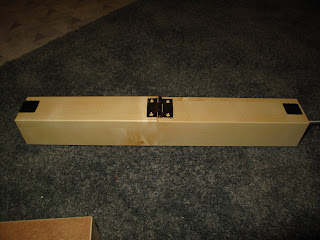















adj. also dy·nam·i·cal (-![]() -k
-k![]() l)
l)
1.
a. Of or relating to energy or to objects in motion.
b. Of or relating to the study of dynamics.
2. Characterized by continuous change, activity, or progress: a dynamic market.
3. Marked by intensity and vigor; forceful. See Synonyms at active.

Image 1 – This shot of a pattern on a bench I just couldn’t get away from; I used a hue gradient to get a really nice change in tone. I believe there are a lot of dynamics represented in this photograph, both in the change in color values, as well as the way the pattern moves with its staggered nature.
Image 2 – This image of my friend’s cat shows the natural instincts on the cat’s behalf when it is dropped from the owner’s hands (from a very safe height, of course). I was interested in freezing the cat’s movements, this has always been something that has sort of interested me. The dynamics are represented in more of the physical aspect, as the cat’s shape is changing and adapting for its landing.

Image 3 – This image of my kitchen faucet turns something ordinary into something absolutely beautiful. It almost seems as if the water is a diamond. The lighting I used is consistent throughout a lot of the photographs in the series, because it is trying to freeze the dynamic aspects of the subject, in this case moving water.
 Image 4 – Capturing the dynamics of a fan was a challenge for me, yet I think this image in the end was successful. Many of my studies of dynamics in this series relate to the physical elements of the subjects, as with this there is movement and change in the blade of the fan.
Image 4 – Capturing the dynamics of a fan was a challenge for me, yet I think this image in the end was successful. Many of my studies of dynamics in this series relate to the physical elements of the subjects, as with this there is movement and change in the blade of the fan.
 Image 5 – This photo relates to the word dynamics in a similar way that the fan does; moving parts have a very dynamic aspect to them, and share some of the core elements of the definition itself.
Image 5 – This photo relates to the word dynamics in a similar way that the fan does; moving parts have a very dynamic aspect to them, and share some of the core elements of the definition itself.
Image 6 – Falling leaves is a common sight here in the Fall and Winter in Eugene. I wanted to capture this dynamic action by staging a falling of the leaves of my own. This action is very natural (in nature of course) however I believe my staged version with dramatic lighting captures the dynamic element of this process very well.
Image 7 – This image of a lighter goes along with the idea of dynamics in nature and the anti-thesis of the water shots. Fire, or oxidation for that matter, is a natural representation of dynamics by changing chemical forms into different ones, also providing heat and light, both very dynamical things indeed.
Image 8 – This image of the River by the Autzen footbridge captures the feeling of being right down there in the Fall yourself. I used the same dramatic lighting to capture a change in time and space, creating a very dynamic atmosphere.

Image 9 – This picture of my skateboard is another representation of the dynamics with moving parts, as with the fan and the bike gears. This is a very important mode of transportation for me, and so many different aspects about this subject are dynamic to me.
 Image 10 – This shot of the train was very risky on my part; I wanted it so bad and had to wait for so long for the train to arrive. Once it did, I risked life and limb by getting close enough to it that I could capture the dynamic parts of the train’s movement through space. I think it was well worth the risk.
Image 10 – This shot of the train was very risky on my part; I wanted it so bad and had to wait for so long for the train to arrive. Once it did, I risked life and limb by getting close enough to it that I could capture the dynamic parts of the train’s movement through space. I think it was well worth the risk.











